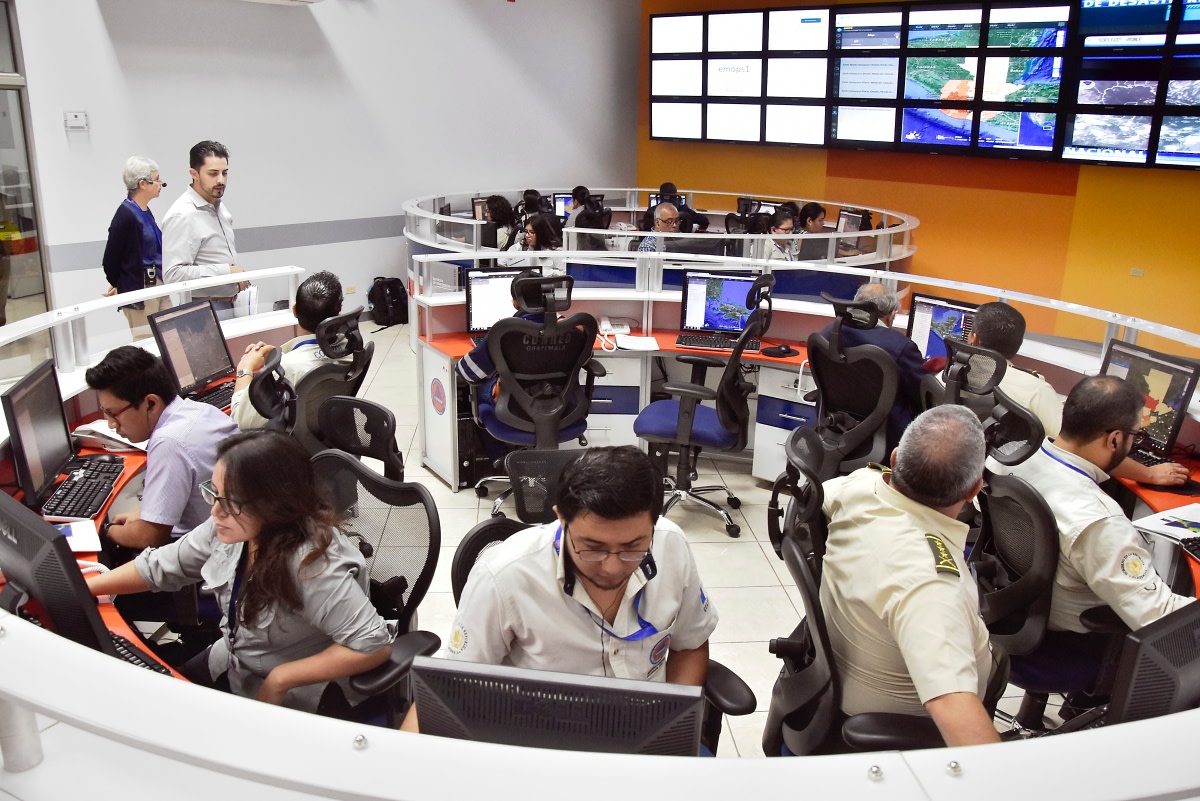Articles Menu
Dec 15, 2021

Power drain: The web burns about as much electricity as the aviation industry. (Photo credit: Pacific Disaster Center/Flickr)
The paradox of combating climate change is that the extent of the emergency extends far beyond the actions taken by individuals to mitigate the climate crisis, yet collective action is what is most required to address this issue. There are so many examples of this dilemma—from recycling to how power is being generated, to what people should consume. In each case, broad-based action is required to shift the dial, and while it might seem insurmountable, every little bit counts. A great example of this sentiment in action can be found in the growing field of eco-friendly web design.
In a 2013 study, the internet’s annual carbon footprint was measured at 830 million tons of carbon dioxide. This would put the web’s electricity output at roughly the same level as the aviation industry. “If the internet were a country, it would now rank sixth in the world for its electricity demand,” states a 2014 article in the Guardian by Gary Cook, a senior IT analyst with Greenpeace.
Power drain: The web burns about as much electricity as the aviation industry. (Photo credit: Pacific Disaster Center/Flickr)
Meanwhile, with the ongoing COVID-19 pandemic leading to people working remotely from their homes and increasingly relying on at-home entertainment, some countries reported a 20 percent increase in “internet traffic” since March 2020, according to a January 2021 article in Science Daily. Extrapolating that data through the end of 2021, the “increased internet use alone would require a forest of about 71,600 square miles—twice the land area of Indiana—to sequester the emitted carbon,” according to the study, which was conducted by researchers from Purdue University, Yale University and the Massachusetts Institute of Technology.
It’s no wonder then that there is a growing interest in making the internet a more eco-friendly place. For instance, Tim Frick’s company Mightybytes is helping to create a more sustainable interweb for all. In an interview with the American Marketing Association (AMA), Frick explained how in the past, the internet was viewed as a “green solution” due to the paper-free nature of its existence. But, as more products and services go online, the need to think about the digital carbon offset has become increasingly important.
“On its own, a digital product might be lighter in terms of carbon emission and environmental impact, but when you multiply that by the number of users on the internet, that’s a potentially very large environmental impact and a big concern,” Frick told AMA, adding that it’s not just the carbon offset of a physical product that determines its environmental impact; it’s also its digital footprint.
Another way to understand why this is the case, Frick explained, is to look at the energy consumption of training a single artificial intelligence (AI) algorithm. According to a University of Massachusetts Amherst report, the amount of electricity used for this process has the equivalent amount of CO2 emissions generated by five average American cars throughout their lifetime. When you begin to consider that thousands of algorithms are being created and trained every day, the scaling effect really begins to hit home.
What does eco-friendly web design look like?
For Frick and his team, sustainability starts by “including the planet as part of your stakeholders.” Website design should prioritize the user (thus the industry term UX, or user experience), which Frick argues should include considering the environment in how things get made. Many internet users and brands don’t consider how much energy is used to power a particular website. According to Frick, “by making your site fast, efficient and easy to find and load, you’re making it better for the planet.”
If this seems a bit abstract to you, there are tangible ways to measure roughly how a site ranks in terms of its eco-efficiency. Frick’s company Mightybytes, for instance, has created Ecograder, a platform where you can enter any URL and get a rating based on that website’s environmental impact. This ranking is based on various indicators which include performance, user experience, SEO ranking and whether the site uses renewable energy.

Green screen: Sustainable web design can help reduce our carbon emissions. (Photo credit: Lyncconf Games)
Eco-Friendly Web Design in Action
Dutch programmer Danny van Kooten offers a good working example of how a small adjustment to a piece of code can make a substantial difference. Featured in Wired in 2020, Van Kooten is the creator of a WordPress plug-in that helps website owners to allow their visitors to sign up for their Mailchimp mailing lists through an embedded form. Van Kooten had previously decided to cut down on his carbon footprint by giving up air travel and eating beef. But when he realized that his plug-in was responsible for making websites larger through the addition of several thousand lines of code required to execute its function, he realized he could do more for the environment than his personal consumer choices.
Over time, this extra code meant extra energy, so Van Kooten decided to simplify his plug-in. Although he only managed to reduce its data use by 20 KB, with more than 2 million sites using his plug-in, the cumulative effect on energy usage is significant. With that small adjustment, Van Kooten was able to save the world roughly 59,000 kilograms of CO2 each month, which is “roughly the equivalent to flying from New York to Amsterdam and back 85 times,” according to the article in Wired.
Frick, while speaking to Wired, offered another example in the form of ad code. “It’s constantly pinging servers; it’s not very efficient,” he said. Frick’s company, for example, found that when U.S. companies like USA Today were forced to remove certain tracking code from their sites due to European Union regulation, “USA Today’s homepage shed 90 percent of its data size and loaded 15 times faster.”
Sustainable fonts have become another popular form of environmentally friendly web design. An article published by Fast Company explores how this simple design choice is improving website efficiency and with it, its impact on the planet. The piece describes the efforts of Amsterdam-based design studio Formafantasma that redesigned its website in a collaborative project with Studio Blanco, a design agency, to make “[t]he site [look] about as plain as possible” by using Arial and Times New Roman as its only fonts. As Formafantasma co-founder Andrea Trimarchi explained to Fast Company, the reason for this design comes down to how a website loads.
“All the content that needs to be loaded in a page, including fonts, logos, etc., are a request to the server,” said Trimarchi. “Arial and Times New Roman are default fonts on both Macs and PCs, which means there are no extra requests required.” By saving the site from making these extra requests, the design ultimately conserves energy. Similar to Van Kooten’s bit of coding, this small amount of energy saved adds up over time. Other default fonts the Fast Company article lists include Courier New, Georgia, Verdana and Helvetica. Another advantage to using default fonts is that it means websites load faster. So, while the site may look more generic, the user experience is improved. And going forward, the simplified look of a website will serve as an indicator of its sustainability.
Despite the overwhelming majority of websites that remain wasteful in their energy expenditure, Frick remains hopeful of the growth of sustainable web design. Since first developing Ecograder in 2011, “[w]e’ve seen this burgeoning community growing globally,” Frick said during his interview with AMA, “but I would say it’s far from the majority. The only way to make a good, positive impact is at scale, so I would like to see most web designers and developers doing this as opposed to a minority.”
Robin Scher is a New York-based South African writer and recent graduate of the Cultural Reporting and Criticism program at NYU, interested in challenging perceptions as they relate to all things prefix-African.